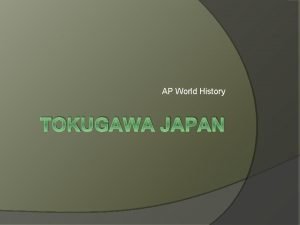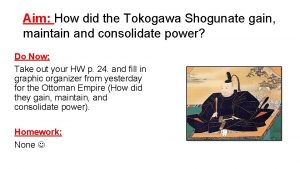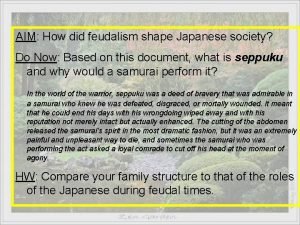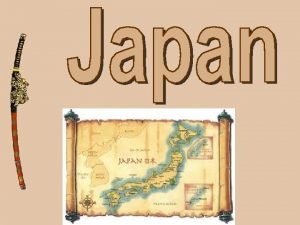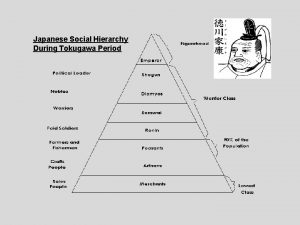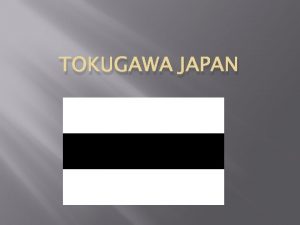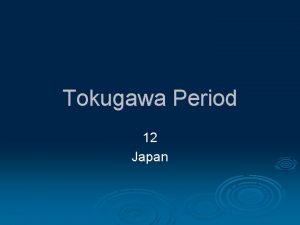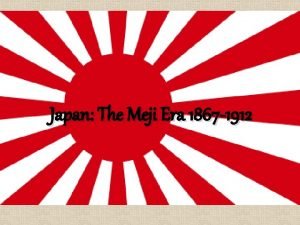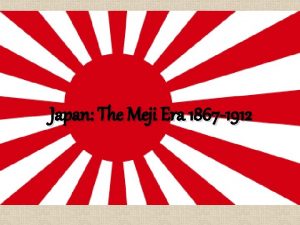Tokugawa Japan The Unification of Japan 1600 1867









- Slides: 9

Tokugawa Japan The Unification of Japan 1600 -1867 • Aim: Explain the impact of the Tokugawa Shogunate on Japan • Do Now: Get a computer and go to the website for the power point titled Tokugawa shogunate http: //riffhistoryclassess. wee bly. com

• 12 th – 16 th Century • A shogun (military governor) ruled Japan who received political rights and land in return for military services. • After the 14 th century, shoguns trying to gain power led Japan to a series of civil wars Background

Tokugawa Japan • A series of military leaders known as the Tokugawa brought about the unification of the land. • Tokugawa shoguns ruled from 1600 until the end of the Tokugawa dynasty in 1867.

Shoguns The purpose of the Tokugawa shoguns was to keep their regions calm and prevent the return of civil war. The shoguns controlled the daimyo who were powerful lords who ruled most of Japan from their vast landholdings.

• The shoguns instituted “alternate attendance, ” which required daimyo to spend every other year in Edo (capital of Japan) at the Tokugawa court. • Intended to keep an eye and stop them from building armies. Controlling the Daimyo

Shogunates Policy Isolationism—policy of avoiding getting involved in the affairs of other nations • (This is the most important policy of the Shogunate that you NEED to know)

Control of Foreign Relations During the 1630’s, the shoguns: • banned Japanese from traveling, • banned the construction of large ships, • expelled Europeans from Japan, • prohibited foreign trade • permitted small numbers of Chinese and Dutch merchants to trade in Nagasaki.

Social and Economic Change 1. Increased agricultural production 2. New methods of water control and irrigation 3. Production of cotton, silk, indigo, and sake increased. 4. Move from subsistence farming to market production.

Exit Slip • To control and protect the Japanese from outside forces the Tokugawa shogunate practiced a policy of: 1. 2. 3. 4. Bushido Isolationism Chivalry Containment
